#photography workflow
Explore tagged Tumblr posts
Text
An art nude photoshoot is more than capturing the human form - it is about evoking emotion and revealing the model’s inner essence. Many elements play a distinct role in shaping the final narrative, creating a visual symphony that resonates with viewers.
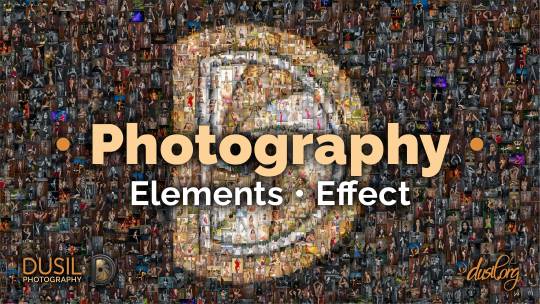
View On WordPress
#art nude photography#artistic photography#Fine Art Photography#international publishing#luxury photography#model nationalities#model selection#photo shoot planning#photography editing#photography equipment#photography expenses#photography inspiration#photography publications#photography statistics#photography storytelling#photography techniques#photography tours#photography trends#photography workflow#post-production editing
2 notes
·
View notes
Text
One Photography Hobbyist’s Journey Posting Online Image Galleries
One downside of having the hobby of photography is what to do with the images (and videos) afterwards. In the olden times, before digital photography, we’d only see the family camera maybe once or twice a year, at Christmas or Easter, and then it might be another year before that roll of film was shot and then who knows how long before the prints would make their way into a box. If you were lucky…
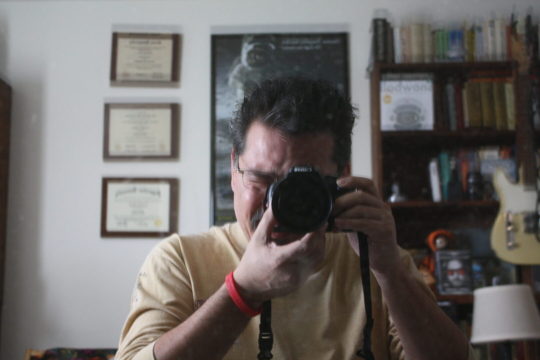
View On WordPress
0 notes
Text
An Image in the Making - Breaking Down A Workflow Process
How do You Post Process an Image? Or do You? Read to see how this photographer approaches this very subjective subject.

View On WordPress
0 notes
Text
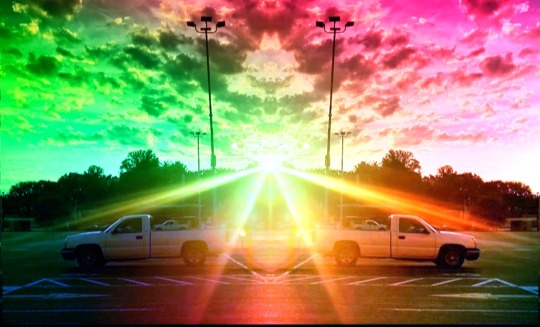
8 notes
·
View notes
Text
Capture Stunning Sunsets with Your iPhone
I went to a spot down at the bay to capture what I thought would be a nice sunset. When I arrived at my location, I was rather underwhelmed by the lack of clouds in the area of the sky where the sun was approaching the horizon. However, not all was lost. I looked 90 degrees to my right and was greeted by the scene you see here. A four shot pano. Capture time: 30 seconds. I decided to try a…
0 notes
Text
Lightroom Classic, mon flux de travail complet. Comment je gère toutes mes photos depuis un seul logiciel ?
Je vous avais parlé de la force de Lightroom Classic dans un précédent article. Je vais à présent vous parler de ma façon d’utiliser ce logiciel et je vais vous expliquer mon workflow complet pour l’editing et l’organisation de mes photos. Avant de continuer cet article, je vous invite fortement à lire mon article qui parle de la suite Adobe Lightroom, où j’ai présenté les différents logiciels…
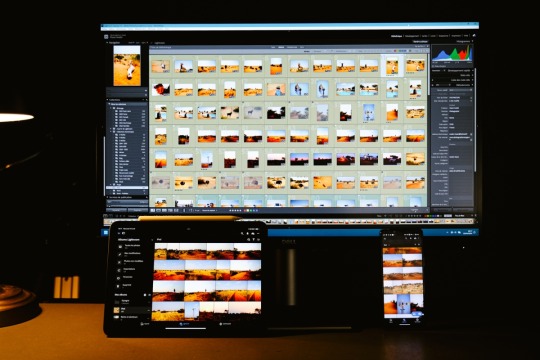
View On WordPress
#Adobe#astuces#Creative Cloud#Gestion#Guide#Ipad#Lightroom#Logiciel#Photographe voyageur#photographie#Voyage#Workflow
0 notes
Text
it is difficult to not look around constantly to see if something looks off. there are examples of people's artistic choices or skill levels being mistaken for ai, when sometimes it was just an artist avoiding drawing hands. when ai tools became popular it was fascinating and fun for me to try out and think of how i could integrate them into my cc. while i wasn't planning on using it for all my future cc, i also wasn't aware of how fast ai would become so prominent in all kinds of media. in previous projects i used different techniques to create art for my custom content, like altering copyright free images or photography and i also used my own illustrations, but i never found a workflow that i could stick to or completely satisfied with my results, so i really wanted to give the new image generators a chance. between stylistic choices, different perception or visualization of light, perspective, colour, proportion, as well as the skill level or post editing effects, there are many other factors that can result in interesting art style, that we can appreciate even if an artist isn't as experienced or has the knowledge that computers do. but still, it will rarely be as irritating for the eyes, as what the off-putting ai generated look and feel some of those images have. ironically i still find the weird compositions and funky shapes that often come with ai art actually quite fitting with the maxis art style as well as the simlish language and script, but as genAI art is all around us now and the generated content becomes so overbearing, i don't want to have generated imagery on my custom content anymore. currently, the frame tv is still bugged due to a recent patch which broke the compatibility with custom content tv's and the gaming consoles. unfortunately the batch fix in sims 4 studio only seems to work for regular tv's, but not the wall mounted ones, so i was stuck on trying to fix it manually but that didn't work out for me either. therefor i will have to re-do the whole object anyway which goes hand in hand with the retexturing of the screen. i'll happily take suggestions and requests for this update from you! :)
302 notes
·
View notes
Text


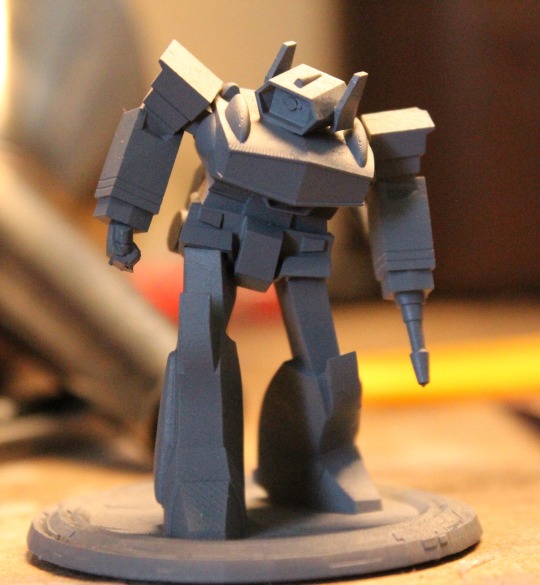
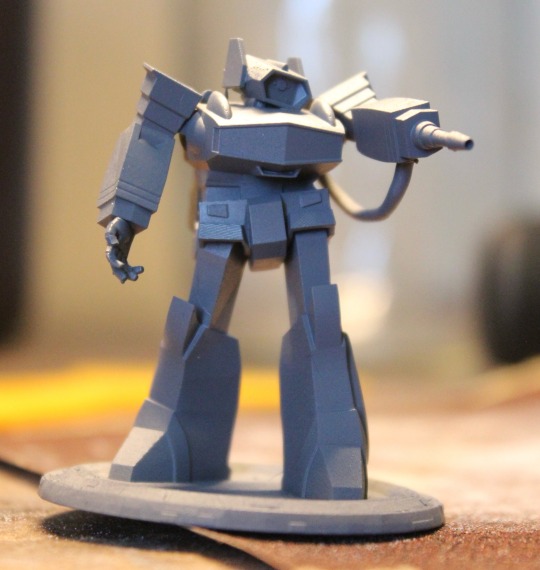
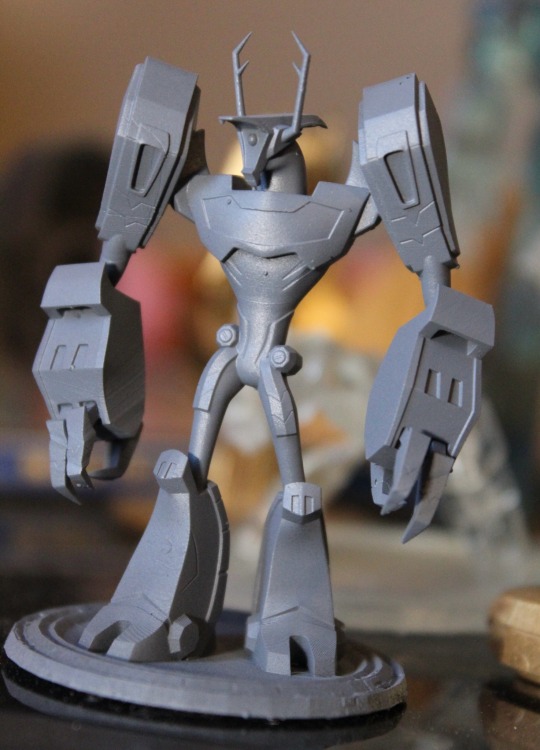


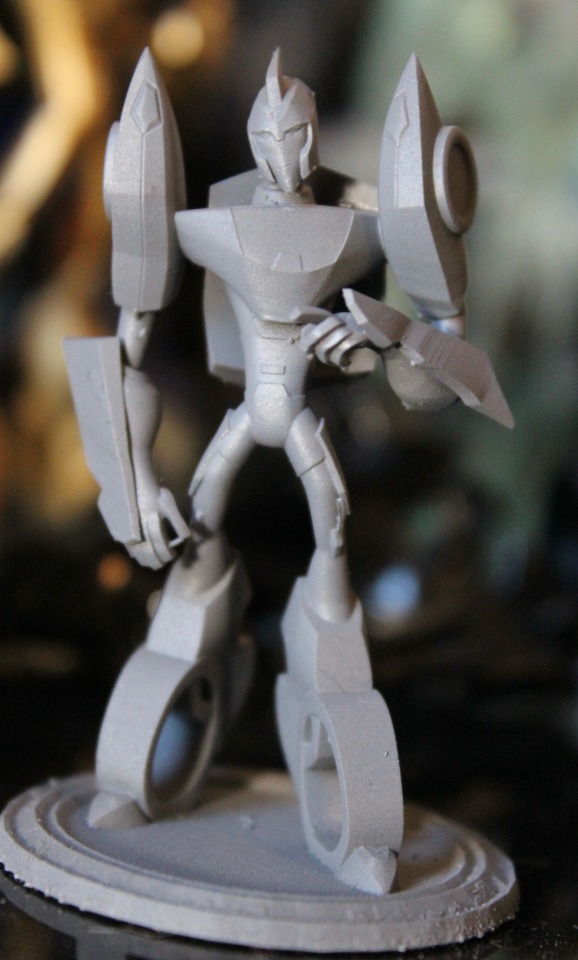
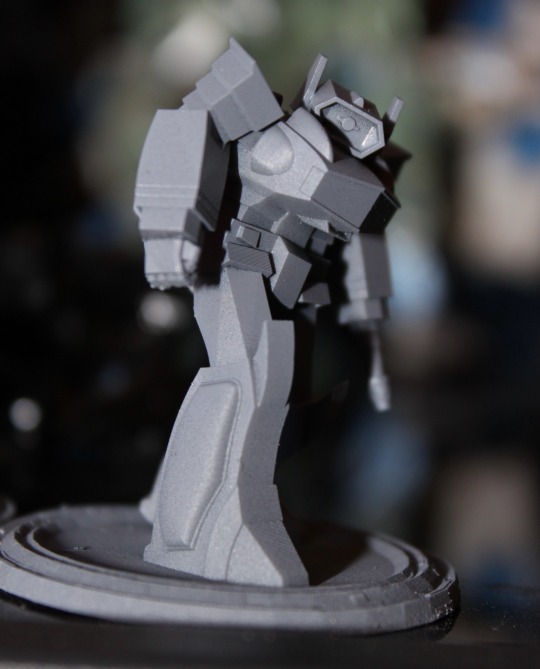
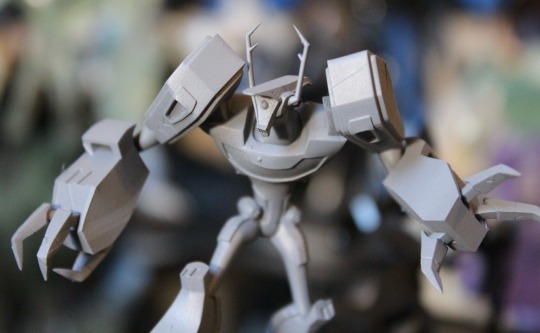
ive learned that primer really brings out details, so i went ahead and printed and primed some proper 'prototypes'!!
im going back on old poses and polishing and prepping them for the best workflow, but these photos also serve as photography practice for me since im still relatively new to it (at least with a proper camera), i REALLY want to paint these, but the temps in AZ are nightmarish so sitting in a 40 C garage for an hour and a half is a little dissuading
im going to work on more poses at a later time, but for now im mostly prioritizing irl, i got a new job recently and i wanna get integrated into that before i stress myself out with the prints
#transformers#shockwave#tfa shockwave#g1 shockwave#maccadam#3d#art#tfa blurr#3d printed#3d model#3d printing#3d art
210 notes
·
View notes
Text
A Scam... Tutorial?
I was watching Photoshop tutorials and YouTube recommended this video to me.

And I was already skeptical. Clarity is an extremely powerful and useful adjustment in Lightroom and Photoshop and I could not think of a reason why anyone would recommend *not* using it to the extent they were using ALL CAPS.
But I was curious if there was a new technique I was unaware of. It's impossible to know everything regarding Photoshop and I learn new stuff all the time.
So I gave the video a chance.
youtube
To quote my late father... what a crock of shit.
I have seen a few scam videos in my time, but I cannot think of ever seeing a digital art tutorial scam. I found myself angry and a strongly worded comment just flew out of my brain.

I continued...
"First, no one should use clarity and texture at 100%. And I think showing the effects at 100%, as if that is a normal workflow, is highly misleading. You are creating a problem that does not exist and then offering a solution to it. And then you are using a provocative title to attract clicks. Not to mention you may be convincing beginners to abandon clarity and texture altogether when it is one of Camera Raw/Lightroom's most powerful tools. People should absolutely use clarity and texture. That is a crazy thing to tell people.
Second, high pass sharpening is… old school. It works but it can create a lot of nasty artifacts if overdone. (Personally I find it too crunchy and prefer smart sharpen on a smart object so it is non destructive). Clarity and texture are much more modern approaches to help bring out detail and I find they actually produce *fewer* artifacts than typical sharpening filters/techniques. And if you have trouble with clarity or texture adjustments in the bokeh areas, then use a local adjustment that doesn't affect those areas. You can even do a separate clarity and texture layer and use the opacity slider and the blend if and masking just like you did with the high pass. Why are you acting like you can only make a global clarity adjustment?
Essentially you are giving a worst case scenario of a clarity/texture adjustment just so you can make your technique seem like it is orders of magnitude better.
And what is even more infuriating is that you can do clarity/texture AND you can do high pass sharpening *together*. Why are you acting like it is one or the other?
I'm so confused by your motivations. Did you invent this clarity problem just so you could make a click bait-y title so you can then sell your little panel thing? And then you used an old school sharpening technique that many have abandoned so it seems like you have secret knowledge that was lost? And I could argue it isn't even a better solution. It's just a different way to achieve similar, if not worse results.
This is like if you put a pound of sugar in lemonade and then said, "Wow, this is way too sweet! You should try my superior lemonade that has a normal amount of high fructose corn syrup."
Lastly, if clarity and texture (set at a reasonable amount) aren't enough to produce sharp, detailed results, then it might be worth considering your actual photography techniques. Modern photography with modern sensors and lenses should be able to produce extremely sharp results without having to juice the hell out of sharpening filters in software. 20% clarity and texture (if that) plus a little bit of smart sharpen is usually more than enough to bring out detail in almost all of my photos and I have never been accused of having soft images.
So, if you are getting soft results, you might need to adjust how you are capturing your images. Are you using a very small aperture like f/22 on that macro image? That could be a diffraction issue. Perhaps it would be better to use a larger aperture at the lens's sweet spot and then do a focus stack.
I mean, I can't think of any other reason a person would need to do 100% clarity and texture unless they completely bungled the actual photography or were still using a kit lens.
I'm sorry but this video is a mess."
Let's look a little closer at what he did to his example.
He started with this.

Then he applied clarity & texture to MAXIMUM. Which, again, is like adding a pound of sugar to lemonade.
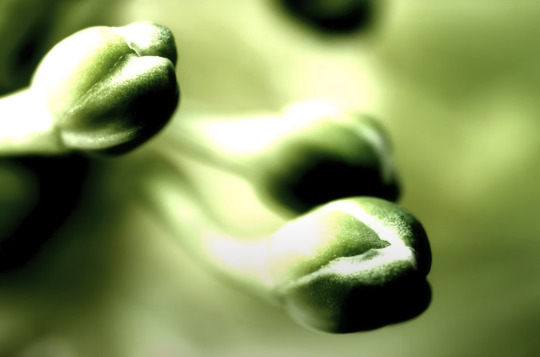
And by golly, it looks pretty bad!
Then he used his secret ancient high pass technique to get this.
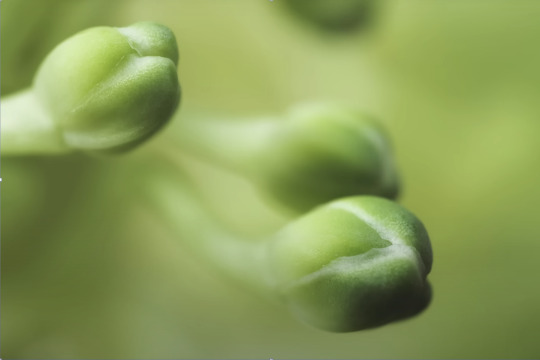
Which looks a hell of a lot like the unsharpened image to me. And the high pass sharpening is probably only visible when zoomed in to 100% on the full resolution image.
Which is one of the issues with this technique. It isn't even noticeable on social media—the place where the majority of photos are viewed these days.
And then after showing you this groundbreaking effect that does almost nothing, he tries to sell you his Photoshop panel.

Yes, that' looks intuitive. Just hit the blue checkmark to do... something?
And what is this green eyeball with a crescent moon inside?

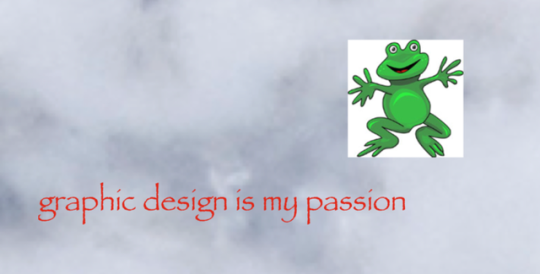
Only $50!

And if you want to know what the purple X button does, you need to pay another $15 for the tutorial on how to use it.

Neat.
Just to prove this is all a scam I'd like to show you an example of my own.
Here is a picture of Otis with no clarity, texture, or sharpening applied.
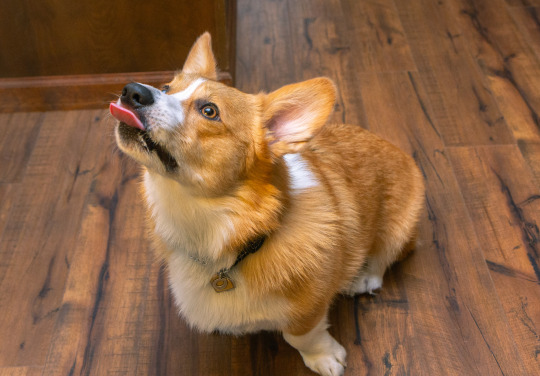
And here is a reasonable amount of sugar. I set the clarity and texture to where I felt they looked best.
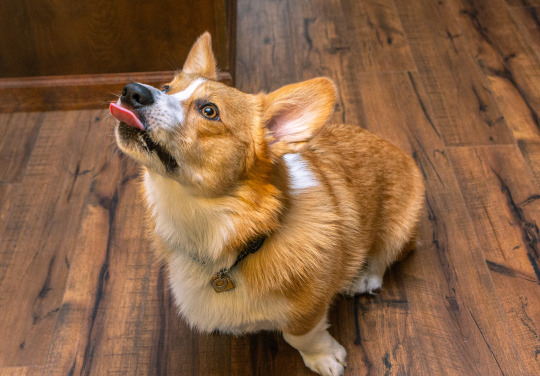
Wow, that looks better. Not only that, you can actually see the difference at social media resolutions!
Now let's add a pound of sugar. MAXIMUM CLARITY GO!
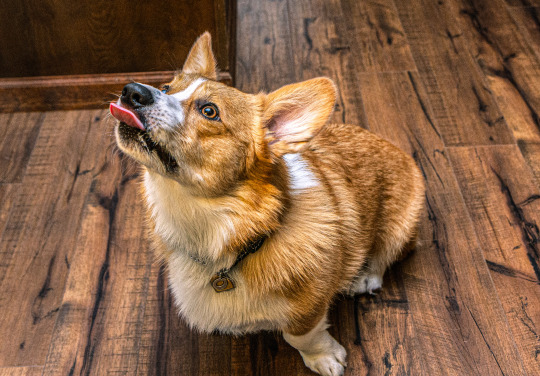
Yep, that looks a bit rough. Because no one does this ever.
And now let's see his high pass sharpening technique.
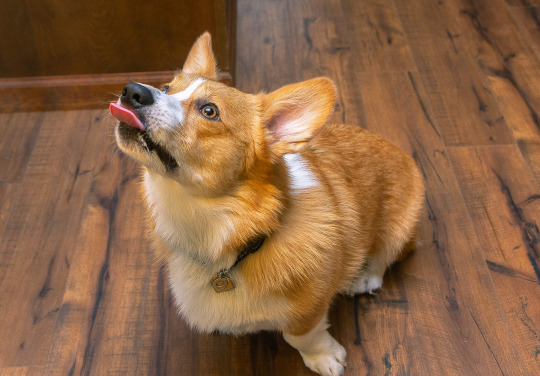
Barely a difference on social media.
Okay, let's try zooming in 200%. Maybe that will give the high pass sharpening the victory.
Normal...
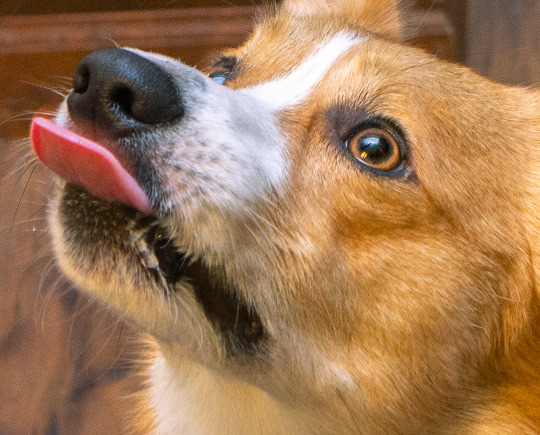
Reasonable clarity & texture...
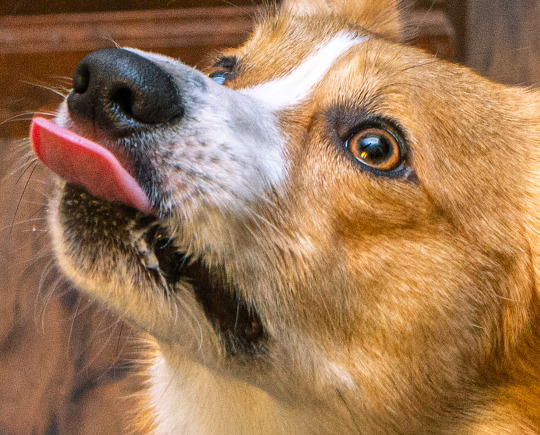
FULL BEANS CLARITY & TEXTURE!
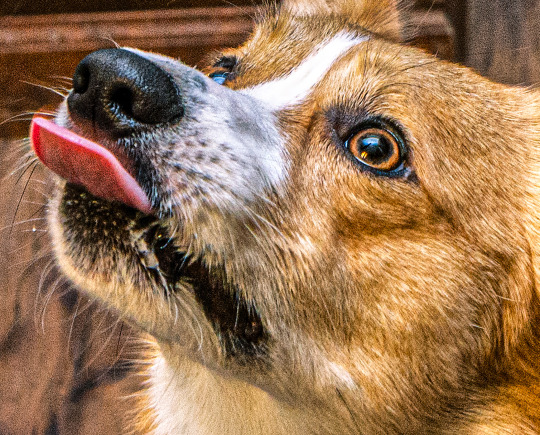
High pass...
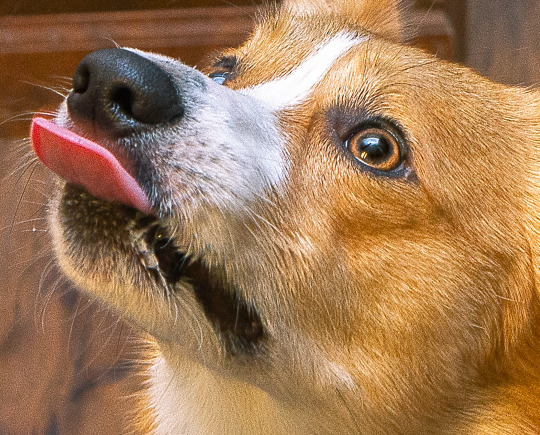
Just as I said, the high pass introduces crunchy sharpening artifacts.
I can't speak for anyone else, but I much prefer the subtle clarity and texture. Perhaps the details in the eyeballs aren't quite as crispy, but in the version that isn't zoomed in, I don't think you feel like the image is soft and the normal clarity and texture adjustment added contrast and actually noticeable detail to the image.
In the end, except for the pound of sugar, these are all subtle adjustments and other photographers might be the only ones who would ever notice. The original Otis picture was probably fine to most people. So disparaging the clarity slider was even more unnecessary.
Why does this matter?
Being a beginner at photography is frustrating. There are so many resources to choose from and it's very difficult to know who is competent and who you can trust. If someone just starting out was recommended this video they could be easily be convinced it is legit. And it could set them back in their progress because they think useful tools will actually make their photos worse. They will waste a lot of time doing a time consuming old school technique in Photoshop when they probably never needed to even leave Lightroom in the first place. They could move two sliders to get similar or better results and it would only take literal seconds.
Time is valuable to a lot of people. And he seems intent on wasting everyone's time. And what sucks is that I have no real way of exposing this dude on a scale that would do anything.
I also just really hate the idea that educational content is being used to scam people.
This is some PragerU shit right here.
68 notes
·
View notes
Text
So this is part 2 of this post, if yall wanna give it a read for context.
In this post, I’ll be talking about how Color’s physical disability of having only one eye would influence how he interacts with his special interests in photography and travel.
As well as how his PTSD, autism, chronic fatigue, and separation anxiety from Killer could also affect things.
With one eye, Color might have reduced depth perception, which could make it challenging to gauge distances accurately. He might rely more on autofocus features, practice to enhance his spatial awareness, or use techniques like focus stacking for precise shots.
He might prefer using cameras with electronic viewfinders (EVF) or live view screens rather than optical viewfinders, which could be more challenging to use with one eye. Adjusting camera settings and composing shots via a larger display would be easier.
He might develop unique framing and composition techniques, leveraging his perspective creatively. Color could take extra time to ensure his shots are well-composed, possibly using grid overlays or other aids to help with alignment.
Customizing camera gear to suit his needs, such as using tripods, stabilizers, or remote controls, to help steady the camera and compose shots more comfortably.
He might spend additional time in post-processing to correct any minor misalignments or issues that arise from the reduced depth perception during the shooting process.
For travel, navigating unfamiliar places might require more caution, especially in crowded or complex environments. He might use mobility aids, rely on GPS and mapping apps, or travel with companions to ensure safety.
Color could engage in meticulous planning to minimize unexpected challenges, such as researching accessible routes, accommodations, and transportation options.
Color might use his experiences and perspective to connect with others, sharing how his disability influences his travel and photography, fostering understanding and empathy.
Developing strategies to cope with the physical demands of travel, such as pacing himself, taking regular breaks, and prioritizing destinations or activities that are less physically demanding.
His unique perspective could inspire him to create compelling stories or advocacy pieces about accessibility in travel and photography, raising awareness and inspiring others with disabilities.
Embracing his distinct view of the world, his photography could offer unique perspectives that stand out, turning his perceived limitation into an artistic advantage.
He might become involved in communities focused on accessible travel and photography, sharing tips, experiences, and inspiring others with similar challenges.
Autism and chronic fatigue would likely significantly impact Color’s ability to engage with his special interests in photography and travel.
In photography, chronic fatigue would necessitate careful energy management. Color might plan shorter, more focused photography sessions and prioritize rest to avoid burnout.
Streamlining his workflow, from setting up equipment to post-processing, to conserve energy. This could include using presets in editing software or organizing his gear for easy access.
He could chose photography locations that are easily accessible and require minimal physical exertion. He might also prefer locations close to home or base to reduce travel time and energy expenditure.
He would likely use ightweight equipment to reduce physical strain, possibly investing in high-quality but compact cameras and lenses. He might also use monopods or lightweight tripods for additional support.
Autism can come with sensory sensitivities. Color might choose quieter, less crowded locations for photography and use noise-canceling headphones or other tools to manage sensory overload.
With travel, he’d have to pace himself. Planning travel with built-in downtime to rest and recharge. He might avoid overly ambitious itineraries and allow for flexible scheduling to accommodate his energy levels.
He’d probably chose ccommodations that are comfortable, quiet, and accessible, ensuring he has a safe space to retreat to when needed.
He’d prefer modes of transportation that offer comfort and minimal stress, such as direct flights, train travel, or driving. He might also opt for private or semi-private tours to control the pace and environment.
Keeping up with healthcare needs, including regular check-ups, medication management, and any necessary accommodations. He might also carry a travel health kit tailored to his specific needs.
He’d combine photography with travel in a way that maximizes enjoyment and minimizes strain. For example, he might focus on travel photography during the golden hours (early morning and late afternoon) when conditions are optimal, and the rest of the day can be used for rest.
Creating content that reflects his experiences with autism and chronic fatigue, such as blogs, vlogs, or social media posts. This can help raise awareness and provide valuable insights to others with similar challenges.
Engaging with communities of autistic travelers and photographers to share experiences, tips, and support. This can provide a sense of camaraderie and practical advice tailored to his needs.
Establishing routines that provide predictability and reduce stress. This might include having a consistent photography and travel routine, preparing for trips well in advance, and creating checklists.
Practicing mindfulness or relaxation techniques to manage stress and sensory overload. This can help maintain focus and calm, particularly in challenging environments.
Utilizing assistive technologies, such as apps for energy tracking, sensory-friendly gear, or digital tools that aid in planning and organization.
Color’s PTSD from solitary confinement and isolation in the Void, combined with his separation anxiety towards Killer, can create a complex situation that both challenges and shapes his engagement in traveling and photography.
Color’s need to stay on the move due to PTSD makes traveling appealing, as it provides a sense of freedom and escape from confinement. However, this constant movement could also become exhausting and anxiety-inducing if it lacks purpose or stability.
His separation anxiety towards Killer might lead him to seek Killer’s company while traveling. Traveling with Killer could provide a sense of security and reduce his anxiety, but it also means his travel plans would need to align with Killer’s availability and willingness to join him.
Color might need to carefully plan his travels to ensure he has safe and familiar places to stay, reducing the unpredictability that could trigger his PTSD. Having a structured itinerary could help him feel more in control and less anxious.
Traveling to new and unfamiliar places might sometimes trigger memories of his isolation, especially if he encounters situations that remind him of the Void. He would need to find a balance between exploring new places and ensuring his mental well-being.
Photography could serve as a therapeutic outlet, allowing Color to process and express his emotions through capturing images. It might help him make sense of his experiences and provide a way to externalize his trauma.
Color might be drawn to photographing subjects that reflect his internal state or provide a sense of solace. He could focus on themes like freedom, movement, and connection, finding meaning and healing in his work.
Having Killer around while engaging in photography could provide comfort and reduce his anxiety. Killer might even become a frequent subject in Color’s photos, symbolizing their bond and mutual support.
Color might need to develop strategies to manage his anxiety while photographing, such as taking breaks, grounding exercises, or having a trusted companion like Killer present. This would help him stay focused and engaged in his special interest.
The mutual separation anxiety between Color and Killer could strengthen their bond, as they rely on each other for emotional support. This bond could provide Color with the stability he needs to engage in his interests.
Color would need to balance his need for movement and exploration with Killer’s needs and limitations. They might develop a mutual understanding and compromise, ensuring both their well-being while pursuing their interests.
Color might prefer traveling to places where he can easily find comfort and familiarity, such as visiting friends or known locations. This reduces the stress of the unknown and helps him stay grounded.
Establishing routines or rituals while traveling and photographing can provide a sense of stability. For example, always starting the day with a specific activity or having regular check-ins with Killer can help Color manage his anxiety.
They might have frequent phone calls if Killer ever can’t join Color on his travels, at particular times of the day.
I can see Color sticking to this routine at the exact time and getting anxious and worried if Killer doesn’t call or pick up, which is likely to happen at some point simply because he has memory issues and sticking to routine is hard for him. But Color, at least for a bit, is likely to assume the worse.
Color might also keep a photograph of him and all his friends close by on his person. (I also like to think that Delta made his camera, he keeps some of Beta’s drawings with him, and also he’s memorized the recipe for Epic’s chocolate cookies.)
If he and Killer have already had their wedding by this point, he’d likely keep his ring close and near. Perhaps kissing it before bed, and fidgeting with it becomes a new comforting stim.
Over time, engaging in his special interests despite his PTSD and anxiety can help Color build resilience. Each successful trip or photography session can boost his confidence and reinforce his ability to cope with challenges.
Color might find deeper meaning in his travels and photography by using them as tools for healing and connection. Documenting his journey and sharing it with others can create a sense of purpose and community.
#utmv headcanons#color spectrum duo#colorkiller#color sans#colour sans#color!sans#killer sans#utmv#sans au#sans aus#killer!sans#killertale#othertale#othertale sans#other sans#undertale#autistic headcanon#utmv hc#undertale au#undertale aus#undertale multiverse#epic sanses#bad sanses#bad sans gang#< for reach#killercolor#undertale something new#epic!sans#delta!sans#cross!sans
39 notes
·
View notes
Text
Y'know I'm really hoping that someday we'll get a version of generative AI that's actually, like, useful and ethical. Imagine a future where you could do a lineart pass in your favourite pen, then waffle about in an lineart editor that uses a model trained on different styles of lineart to let you modify it in post to say, a scratchy pencil or charcoal or adjust the thickness or whatever. That would be pretty cool. Or imagine an addon for Blender that could analyze a photo and recreate the lighting setup. Sick.
The problem is that in this capitalistic hellscape we've sort of lost the ability to use new technology to better humanity. A lot of people compare it to traditional art and photographs, but like... photography added new ways for traditional artists to work. We developed new methods to increase the ease of certain tasks, like rotoscoping animation or tracing photos. Somebody looked at a part of the artists' workflow, said "that could be made more efficient," and then built it.
And we're not really getting that with this wave of generative AI. We were getting it before the tech bro invasion- like for example I remember AI powered vocal synths way before the explosion of generative AI and they were awesome, using machine learning to improve the output of programs like Vocaloid and SynthV and make them sound more realistically human. Where is that for art? Hell, who is making that for music or anything now?
It's like in the past the typical flow was design new technology -> research the market -> come up with ways to implement the tech in the market -> perfect the implementations -> profit, but now it's design new technology -> put the unfinished technology into everything -> profit (?) At no point in the process is anybody actually stopping to think of interesting ways to implement machine learning into the real workflows of professional artists because they're all skipping like 15 steps in the product development pipeline to make max amounts of money.
If these companies were doing things the normal, traditional, useful way and trying to actually develop high quality products, all of the backlash and hostility would never have developed. If you got a focus group full of senior artist directors into a room and asked them about ways to implement AI into their workflows you would immediately come up with a better product.
Just off the top of my head...
Program that can take a 3D scene and convert it into a sketch. Immediately cuts down on workload for comic layout artists and storyboard artists
Tool that analyzes your lineart and generates basic cell shading. Pretty sure the new version of CSP has this but idk if it uses machine learning or if it's good. Makes shading way more efficient
Tool that can take basic airbrush blending and change it to different blending presets. Imagine being able to just hit a button and switch your blending to use different brushes.
Post-proces colour jitter, higher quality colour blending, easier posing for 3D rigs, all sorts of small shit
But we aren't getting any of those things because the people designing these programs fundamentally don't care about making a good or useful product
11 notes
·
View notes
Text
Weirdly Motivated to Write



Well, I did say that I have a new keyboard—to correct my posture and not look like a pretzel while I work remotely. Small victories, right?
Now, let’s talk about motivation. Because for some reason, I am absolutely buzzing with it today. Is it because of my keyboard? Most likely. Is that weird? Probably. But hey, I never claimed to be normal.
See, besides being a full-time student, I also have a job. And that job? Writing. Creating. Capturing life in words, pictures, and fleeting moments of inspiration. Filming, writing, photography—these are the things that make me absolutely happy. And honestly? Life is just too beautiful not to share.
There’s something about having the right tools that makes everything feel different. You could give me the exact same blank document yesterday, and I wouldn’t have been nearly as eager to write as I am today. But now? With my new keyboard? I feel like I could churn out a whole novel, rewrite history, or at the very least, write an unnecessarily long blog post about why I feel like writing.
Maybe it’s the clickity-clackity. (Yes, that’s a technical term.) There’s just something deeply satisfying about hearing each keystroke, like a tiny round of applause with every word I type. It’s hypnotizing. Encouraging. Addictive, even. Without it, I don’t think I’d be half as motivated to write.
And that brings me to a very important question:
Could this mean my iPad will replace my laptop?
Ha! Not a chance. Never. Not in a million years.
As much as I love this setup, there are things my iPad just cannot do. And honestly, those things make a huge difference in my daily workflow. Don’t get me wrong—iPads are fantastic. They’re lightweight, portable, and perfect for quick notes, reading, or sketching. But when it comes to serious work? My Windows laptop remains irreplaceable.



Why My Windows Laptop Wins Every Time
Multitasking Like a Pro iPads have some multitasking capabilities, but let's be real—nothing beats having multiple windows open, side by side, without limitations. On my laptop, I can have a research paper in one window, my notes in another, a video playing on the side, and Spotify running in the background. Try doing that on an iPad without constantly swiping between apps. It’s just not the same.
File Management That Actually Makes Sense The Windows file system is superior. Hands down. Drag-and-drop functionality, proper file explorer, external drive support—it’s just easier. iPads, on the other hand, have a clunky file system that often makes me want to scream into the void. Copying files? Moving them? Finding them again? It takes way longer than it should.
Software Compatibility & Heavy-Duty Programs This one’s a dealbreaker. There are so many professional-grade applications that just don’t run on iPads. Things like:
Adobe Premiere Pro for serious video editing (iPad versions are limited)
Photoshop & Illustrator (yes, they have mobile versions, but they’re nowhere near as powerful)
Microsoft Excel with Macros (because let's be honest, the iPad version is lacking)
Programming software & full IDEs (if I ever decide to code, my iPad will just sit there, useless)
Mouse & Keyboard Freedom Yes, iPads can connect to a mouse and keyboard, but do they truly function like a laptop? Nope. There are still weird limitations. Right-clicking? Custom shortcuts? The precision of a real trackpad or external mouse? Windows just does it better. Period.
Downloading Anything Without Jumping Through Hoops iPads don’t let you download everything you want, especially if it’s outside the App Store. Need a program that isn’t on Apple’s list of approved software? Too bad. Meanwhile, on Windows? I can download whatever I want, whenever I want, however I want. No restrictions.
Serious Writing & Formatting Writing on an iPad is fine for quick drafts, but when it comes to formatting long documents, citations, and exporting files in different formats? My laptop is my best friend. Whether it's proper PDF editing, running reference managers like Zotero, or managing multiple Word documents with complex layouts, iPads just don’t cut it.
Gaming & Emulation Okay, maybe not work-related, but still important! iPads have mobile games, sure. But do they run full-fledged PC games? Nope. Can I use them for game modding? Nope. Can I play older games with emulators? Again, nope. My Windows laptop, on the other hand? Unlimited possibilities.
The Verdict?
As much as I love the convenience of my iPad + keyboard combo, it will never replace my laptop. Ever. My laptop is where the real magic happens—the deep work, the serious projects, the things that actually require a proper computer.
But will I still use my iPad for writing on the go? Absolutely. Because nothing beats the clickity-clackity joy of my new keyboard. And if that keeps me weirdly motivated to write, then hey—I’ll take it.
So if you ever see me typing away somewhere, looking ridiculously focused, just know—it’s not me. It’s the keyboard.
#book#books#bookstore#new books#book review#booklr#books and reading#bookworm#book quotes#book blog#old books#bookblr#books & libraries#read#reading#reader#currently reading#long reads#library#literature#classic literature#english literature#book lover#english#classic#classics#bookshelf#bookshelves#productivity#ipad
10 notes
·
View notes
Text
Thinking Out Loud About the Photographic Image Post-Processing Process
Thinking Out Loud About the Photographic Image Post Processing Mindset. What Path Defines Your Approach to an Image Processing Workflow?
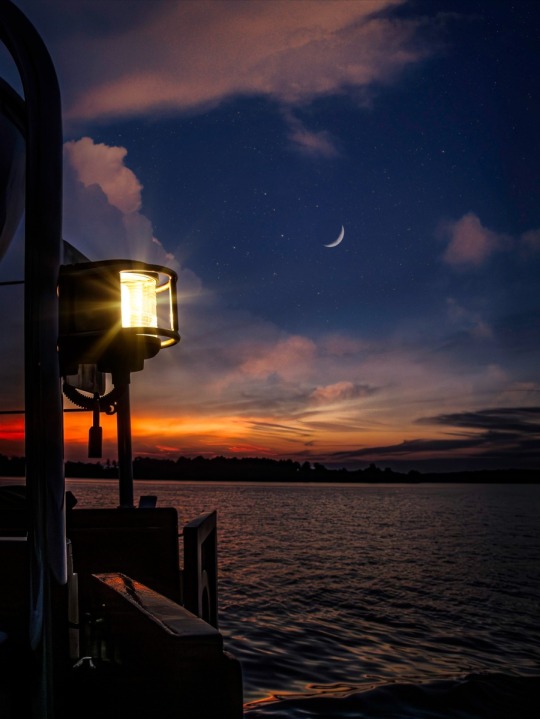
View On WordPress
1 note
·
View note
Text
Virtual Photography Process
I got an ask that I posted by accident before being ready, so I'm going to make this a post I suppose fmdlksg Anon was asking about my Reshade Preset for Cyberpunk and what my VP process is, so here it is!
Anon, I don't quite have a VP process. Not in a trademark way anyway. My VP varies wildly across the years and generally speaking I just go with the vibe I feel at the moment!
I've had phases where I would barely do any post-processing at all and only rely on heavy Reshade, I had phases where I'd do some minor color tweaking and add a lot of effects like dust and sparks, and my current one where I do pretty much all my color tweaking in post-process and only really use light Reshade to sharpen the image and make colors pop a bit.

My current Reshade is a tweaked version of a friend's preset. I have an average rig, don't have any Fancytracing, so Reshade is mostly there to sharpen the image, deepen the colors and try to compensate for my GPU's limitations. I forgot to use Otis DOF for this example, but nowadays I don't use any Reshade DOF, and rely only on Otis'. I also only use Otis lights because I can control what each light does a little better than AMM lights, but I used AMM lights a lot when I first was VPing.
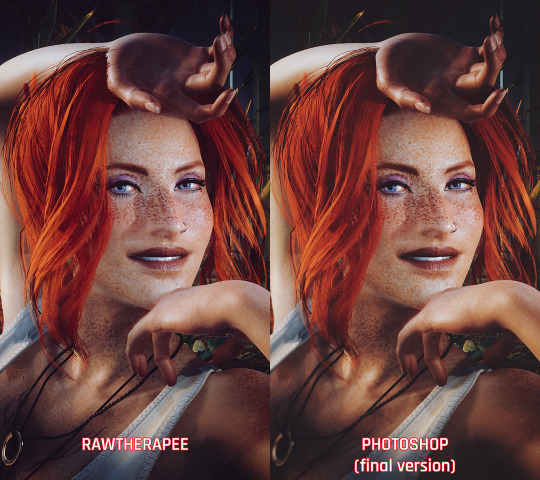
It's when the game's closed that I have my fun with colors!
I do my coloring on RawTherapee, which is a free Lightroom. Mostly I make use of the Film Simulation, sometimes layering multiple, sometimes using only one.
I then move to Photoshop which is my last stop and my "correction" phase. I have a huge library of actions and gradient maps I paw around for any last coloring (specially making shadows more matte and less defined), tweak contrast/brightness, and add some blurring and noise (beloved).

I probably have actions/gradient posts reblogged on my repository blog (@halkuonn), I can't point you to a single place because I've been dragging these around for over a decade and across at least 3 computers...
Honestly, don't get too attached to a single workflow with your VP. VP is art and art is meant to be a creative outlet, if you start putting too many rules and step by steps on your personal workflow, you'll probably get frustrated fast.
My current workflow is way lengthier than how I took some of my older VP, but that's because I feel like doing it. I don't necessarily feel like it's better or worse, it's just a different way I've been doing stuff and having fun with VP.

This is from 2022 - I wasn't using Otis Freecam, relied on AMM Lights, and did some mild/low post-processing - things like making the shadows a little bit more purple with Color Balance, and adding A LOT of blur manually because I didn't know how to use any of the DOF shaders. I was using Pinky's Preset back then.

This is from 2023 - the fuck it we ball era. This has like... 0 post-processing. I wasn't using Otis DOF (I don't think it existed yet), but I was already using Otis Lights learned to use the DOF shaders. The only thing I was doing for post-processing is add Noise and slap my signature (which this one doesn't even have lmao). I already had a new Reshade preset from my friend, but didn't really tweak any of it.

From this year! I still wasn't using RawTherapee a lot, but it was the start of my "I'm going to do everything in post-processing" era, with shadows not as dark/contrasted and everything a bit hazy.
So yeah! Don't stress about having a single workflow, or the best workflow, or even the most appropriate Reshade. For me the less I try to be biblical about my VP process, the more I enjoy taking it, and in turn the more satisfied I am with the results.
If you want more of a tutorial, I can try?? doing one?? but really the only thing I have been consistently doing with my VP all these years is slapping some extra blur and adding Noise on PS.
Hope this helps or at least provides some software recommendations / process ideas though!
26 notes
·
View notes
Text
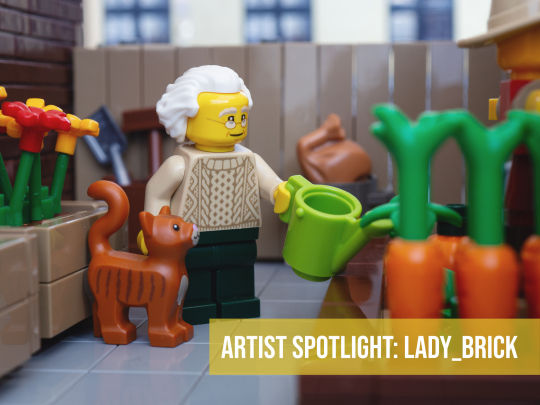
🤩 ARTIST SPOTLIGHT: @lady-brick Hello everyone! It's time to direct the spotlight toward our community members, and today we will get to know better @lady-brick!

"Hi everyone! My name is Julia, known as Lady Brick on Instagram and I’m from Spain.
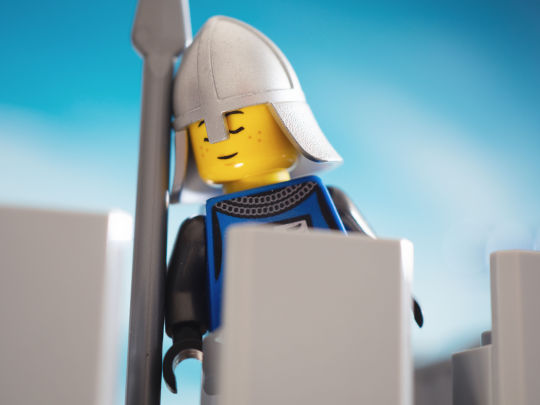
My adventure with toy photography started in 2011 when a small Wall·E arrived at home. The toys are good for practicing photography techniques, and help me to relax my mind and are a way to escape from my daily routine.

The minifigures, sets, and accessories are a source of inspiration and also an addiction. So, for this reason, now I only shoot LEGO photos.

I like making people believe that a small toy made of plastic is alive. In fact I enjoy recreating comic situations to make people smile.

I find inspiration in everyday life, watching movies and from LEGO communities on Instagram and Flickr. My favorite subjects are the minifigures, but my works includes various themes like medieval, pirates, astronauts, movies...for example, I enjoy put the stormtroopers in unusual situations.

I currently use Olympus OMD E-M10 Mark III with 30mm macro lens with a LED panel for lighting. In my workflow, I’ll draw a sketch or write some lines just to remember the idea.

I think that details are important and for this reason, I try to collect all the things that will I need to prepare the scene.

I think about the composition and the lighting. I like to move the camera lens to the eye level of the minifigures – it helps to dive into the scene and makes it more credible."
Thank you for accepting our invitation and let the community knows you better!
If you want some insights on the exclusive picture and for a better view of the others, head to our blog at https://brickentral.net/.
- @theaphol, Community Outreach Manager
#lego#lego photography#brickcentral#toy photography#afol#legophotography#toyphotography#minifigures#brickcentral member#brickcentral artist spotlight#artist spotlight
49 notes
·
View notes
Text
Yvette Heiser - Advanced Photo Editing Demystified: Guide to Painting with Pixels
In the realm of digital art and photography, mastering advanced photo editing is a skill that can elevate your work from ordinary to extraordinary and Yvette Heiser Painting with Pixels A Guide to Advanced Photo Editing Techniques, a renowned expert in digital artistry, offers a comprehensive guide titled "Painting with Pixels" that demystifies advanced photo editing techniques. This guide serves as a roadmap for photographers, artists, and enthusiasts looking to enhance their editing skills and create stunning visual masterpieces.
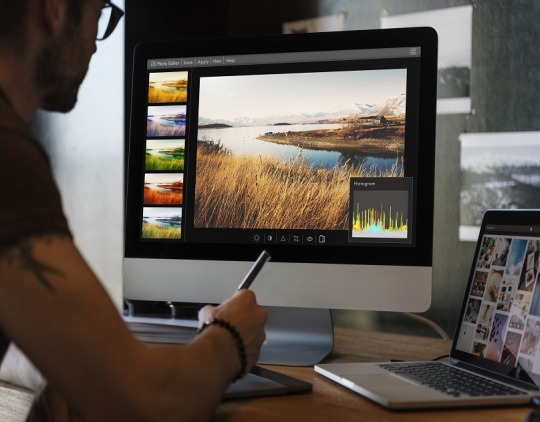
The Foundation: Understanding the Basics
Before delving into advanced techniques, Yvette Heiser emphasizes the importance of building a strong foundation. This starts with understanding the basic tools and functions of photo editing software, such as Adobe Photoshop or Light room. Mastery of basic adjustments like exposure, contrast, saturation, and sharpening is essential for any aspiring digital artist.
Harnessing the Power of Layers
One of the most crucial aspects of advanced photo editing is the use of layers. Layers allow you to work on different elements of an image independently, offering unparalleled control and flexibility. Yvette’s guide delves into the art of layering, covering techniques such as layer masking, blending modes, and adjustment layers.
Advanced Retouching Techniques
Yvette Heiser’s guide also explores advanced retouching techniques, which are essential for achieving professional-quality results. These techniques go beyond basic touch-ups and include intricate procedures like frequency separation, dodging and burning, and high-end skin retouching.
Creative Enhancements and Compositing
Beyond technical skills, Yvette’s guide emphasizes the importance of creative enhancements. This includes techniques like compositing, where multiple images are combined to create a single, cohesive masterpiece. Yvette demonstrates how to use selections, masks, and blending modes to seamlessly merge different elements, whether it’s placing a subject in a new background or creating surreal, imaginative scenes.
Utilizing Filters and Plugins
Filters and plugins can greatly enhance the editing process by offering specialized effects and tools not available in standard software. Yvette’s guide introduces a variety of filters and plugins that can streamline workflow and achieve stunning results.
For instance, the Nik Collection offers a suite of filters for color correction, sharpening, and creative effects. Plugins like Portraiture are designed specifically for portrait retouching, providing advanced skin smoothing and detail enhancement tools. Yvette provides insights into selecting the right plugins and integrating them into your editing process for maximum efficiency and creativity.
Food photography is an art that captures the essence of culinary creations, and when done right, it can evoke strong emotions and cravings of Yvette Heiser-Deliciously Dark: Exploring Food Photography in Night Settings, a celebrated food photographer, takes this art form to new heights by exploring the enchanting world of food photography in night settings. Her unique approach to capturing the deliciously dark and mysterious allure of night-time dining experiences offers a fresh perspective on food photography.
The Magic of Night-time Food Photography
Night-time food photography presents a unique set of challenges and opportunities. The low light conditions can create a moody, atmospheric backdrop that enhances the visual appeal of dishes. Yvette Heiser believes that the interplay of shadows and highlights in a night-time setting can add depth and dimension to food images, making them more compelling and captivating.
One of the key elements that Yvette focuses on is the use of artificial lighting. Unlike natural daylight, which can be unpredictable, artificial lighting allows for greater control and consistency. By mastering the use of different light sources, such as soft boxes, LED panels, and even candles, Yvette creates a warm and inviting ambiance that brings out the textures and colors of the food.
Techniques for Mastering Night-time Food Photography
Choosing the Right Lighting: Yvette emphasizes the importance of selecting the right lighting equipment. Soft, diffused light is ideal for food photography as it reduces harsh shadows and highlights the details of the dish. She often uses soft boxes or diffusers to achieve this effect. For a more intimate and cozy feel, candles or string lights can be used to create a warm, golden glow.
Playing with Shadows: Shadows play a crucial role in nighttime food photography. Yvette uses shadows to add drama and depth to her images. By carefully positioning the light source, she creates interesting shadow patterns that enhance the composition and draw attention to the main subject.
Balancing Colour Temperature: The color temperature of the light can significantly impact the mood of the photograph. Yvette uses a combination of warm and cool lights to create a balanced and aesthetically pleasing image. Adjusting the white balance settings in the camera or during post-processing can help achieve the desired effect.
Focusing on Composition: Composition is key in any form of photography, and nighttime food photography is no exception. Yvette advises using the rule of thirds, leading lines, and symmetry to create visually appealing images. Paying attention to the placement of utensils, napkins, and other props can also add to the overall composition.
Using Reflectors and Bounce Cards: To fill in shadows and create a more balanced light, Yvette often uses reflectors and bounce cards. These tools help to redirect light onto the subject, ensuring that all parts of the dish are well-lit and highlighted.
Conclusion
"Advanced Photo Editing Demystified: Yvette Heiser’s Guide to Painting with Pixels" is an invaluable resource for anyone looking to elevate their photo editing skills. From mastering basic adjustments to exploring advanced retouching and creative techniques, this guide provides comprehensive insights into the art of digital editing. By following Yvette’s expert advice and dedicating time to practice and experimentation, you can transform your photos into captivating works of art and achieve new heights in your digital artistry journey.
#wedding#camera#moments#pictures#childphotography#photographytips#photographer#photography#yvette heiser#events
13 notes
·
View notes